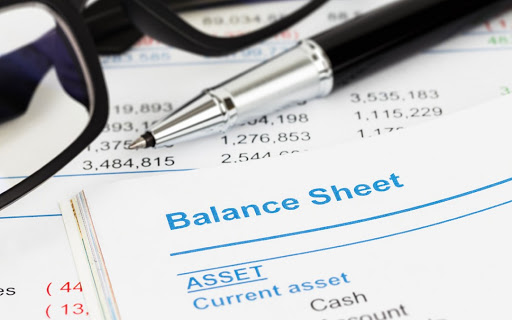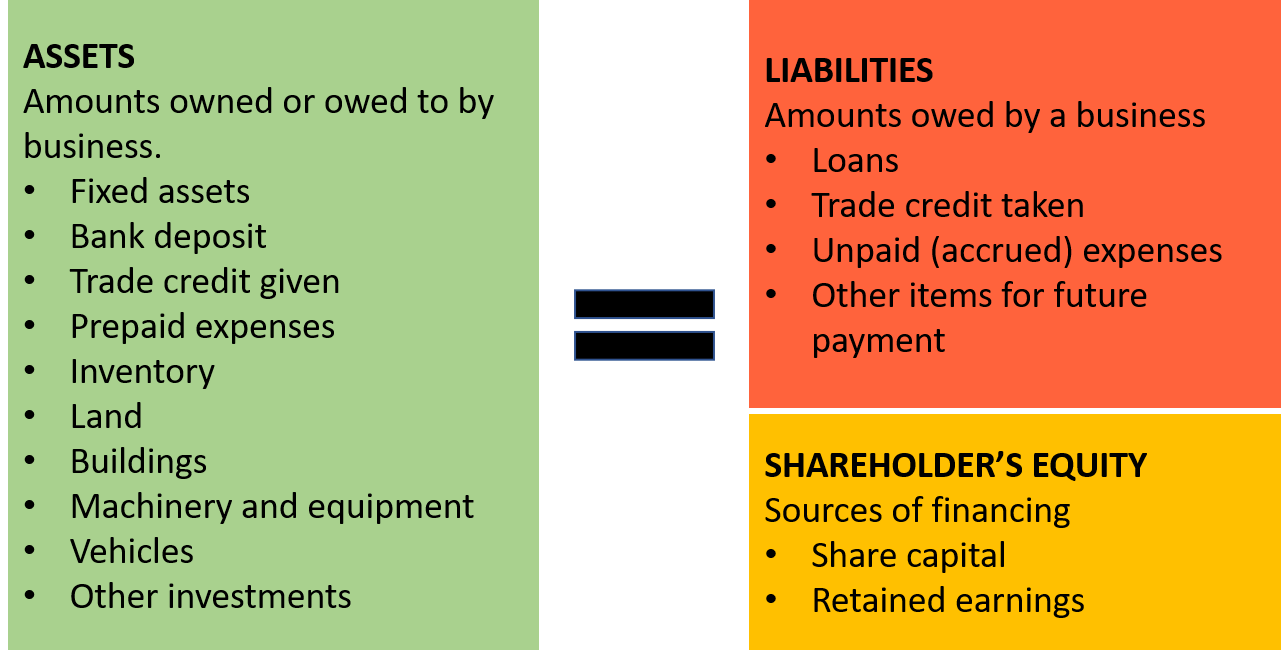
A Balance Sheet is a statement of position at a given date. It is like a snapshot at the close of a given day of a business.
The balance sheet lists all the money owned or owed to a business (the assets) and the money owed by a business (the liabilities).
The balance sheet also includes what the owners or shareholders have put into the business (in other words the source of financing of the business) otherwise known as the shareholder’s equity.
The Balance Sheet is stated as:

You would always want to own more than you owe. So, your assets should therefore not only be equal to any liabilities (loans you may have taken), but also the actual financing that you have put into the business.
Arithmetically, shareholders equity always equals assets less liabilities.
The diagram illustrates what goes into a balance sheet:
The Balance Sheet: Assets equal Liabilities plus Shareholder’s Equity

Some balance sheets that you come across will be laid out vertically and others horizontally.
Assets and liabilities may be classified as short term (current assets and current liabilities) or as long term. Short term assets and liabilities are usually those recorded as of the current financial year, whereas long term assets and liabilities are those that are recorded over periods greater than one year.
Watch the video below and read it together with pages 90 to 94 in the Learner Guide. We advise that as you go through the video you make notes in your LG and check if you understand.
Click here to view a video that explains the Balance Sheet.
Lecturer Broadcast
Click here to learn more about the Balance Sheet.
Klik hier om meer te leer oor die Balansstaat.